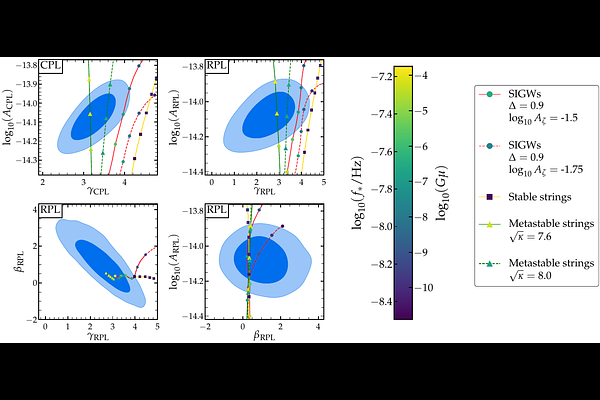From new physics to a running power law and back again: Minimal refitting techniques for the reconstruction of the gravitational-wave background signal in pulsar timing array data

From new physics to a running power law and back again: Minimal refitting techniques for the reconstruction of the gravitational-wave background signal in pulsar timing array data
David Esmyol, Antonio J. Iovino, Kai Schmitz
AbstractPulsar timing array (PTA) collaborations recently presented evidence for a gravitational-wave background (GWB) signal at nanohertz frequencies. In this paper, we introduce new refitting techniques for PTA data analysis that elevate related techniques in the literature to a more rigorous level and thus provide the basis for fast and accurate Bayesian inference and physically intuitive model comparisons. The key idea behind our approach is to construct maps \Phi from GWB spectral models to a running-power-law (RPL) reference model, such that the pullback \Phi^* P_RPL of the RPL posterior density P_RPL induces a likelihood on the GWB model parameter space; in other words, we refit spectral models to the RPL posterior density. In order to construct \Phi, we introduce a matched-filtering approach in which \Phi follows from a \chi^2 minimization that accounts for the frequency dependence of PTA sensitivity curves. We validate and illustrate our techniques by three concrete examples: GWs from stable cosmic strings, GWs from metastable strings, and scalar-induced GWs.